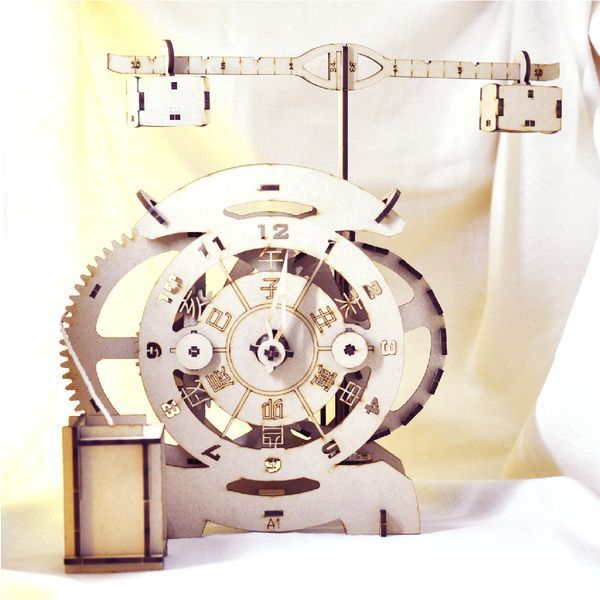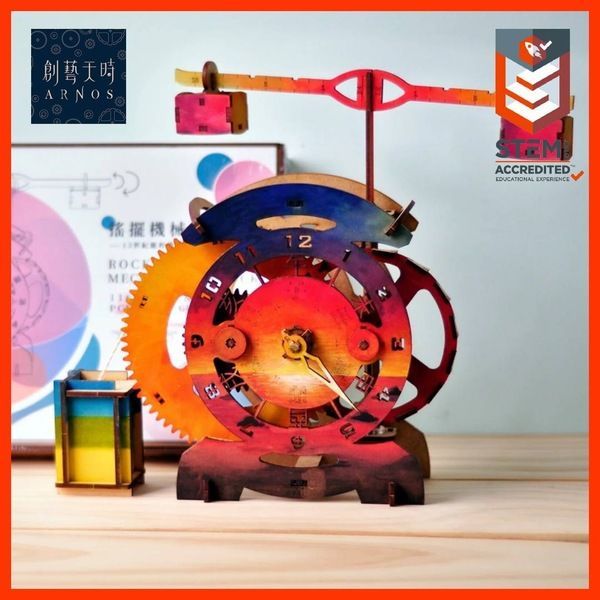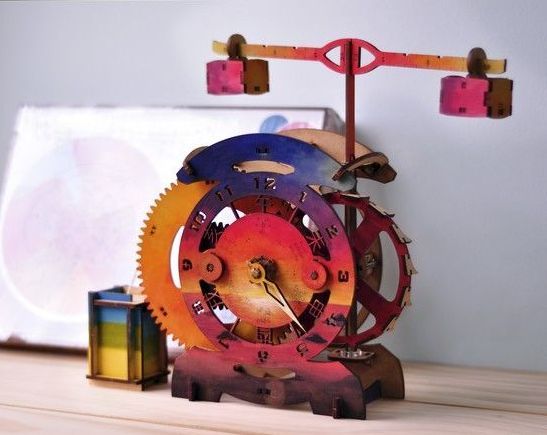Pendulum Mechanical Clock | Start a journey through time with Matteo Ricci
Level|★★★☆☆
Assembly Time |About 2~2.5 Hours
Appropriate Age|8+
Accessory |Assembly instructions with pictures
Product size |22cm*9.5cm*28cm(without the pendulum rod)
Package size |30cm*23cm*3.5cm
Material |Wood
Place of origin |Taiwan
On-line shop

INFORMATION
Product Introduction
What is Pendulum clock?
Unlike ordinary clocks, the pendulum clock features a long "adjustable pendulum rod" on top. By attaching different weights and adjusting the length of the pendulum, the hands on the clock face will move at varying speeds!
★Recommended by 100+ teachers from the elementary and junior high schools
★Certificated by STEAM.org in the USAEAM.org in the USA
Timing, regardless of the era, has always been an indispensable technology, greatly impacting human life stability and technological innovation. The methods of timekeeping have evolved over the ages, from ancient water clocks to medieval mechanical clocks and even modern electronic watches, all enhancing our daily convenience.
During the Ming Dynasty, Italian missionary, Matteo Ricci, introduced the pendulum clock to Asia, presenting this Western innovation along with scientific research, which amazed the Eastern world.
In light of this, we are introducing the 'Pendulum Mechanical Clock,' which simplifies the principles of ancient pendulum mechanisms. Without using electricity, it employs a combination of pendulum length, gears, and weights. Through the assembly process, children can experiment with different combinations of these elements, gaining an easy understanding of mechanical clock mechanisms, pendulum principles, gears, and escapement system design. This not only highlights the brilliance of ancient timekeeping inventions but also fosters scientific curiosity and interest, offering an excellent opportunity for hands-on learning and discovery!
|A story of Escapement system|
In the world of clocks and watches, the "escapement system" is often mentioned. But what exactly is it?
The escapement mechanism was originally invented by Philo of Byzantium in Greece. However, the escapement mechanism used in clockworks was developed by Yi Xing, a Buddhist monk, astronomer, mathematician, and engineer during the Tang Dynasty.
Literally, "escapement" means "to take and release." Through this take-and-release mechanism, energy is first collected and then regulated by other components to ensure the movement remains stable and accurate. This allows the Second hand to move in a precise and orderly manner. The quality of the escapement mechanism directly affects the accuracy of the mechanical watch!
Important Notes
- Please polish the wooden parts with the included sandpaper before assembly. Also, be cautious of small parts to prevent children from swallowing them.
- No glue is required; simply follow the instructions to install the parts in their correct positions and slots, and ensure that the parts fit together properly to ensure the model functions correctly once assembled.
- If you find any missing parts or have other assembly questions, please contact us.
▲Educational institutions can enjoy special discounts for bulk purchases. Please fill out the "Contact Us" form, and we will get in touch with you shortly.






